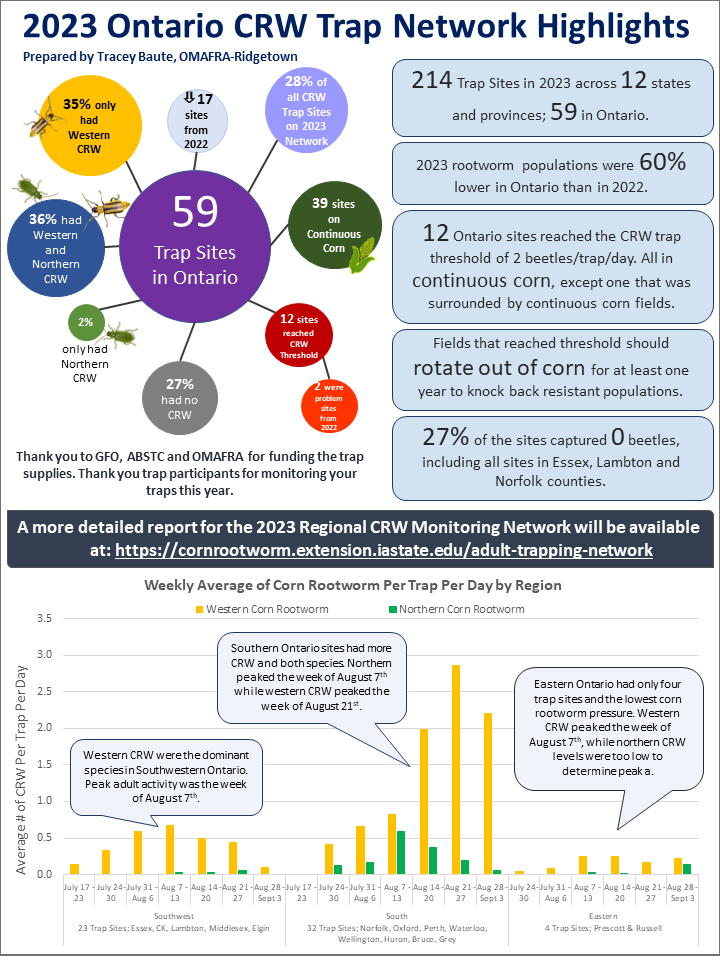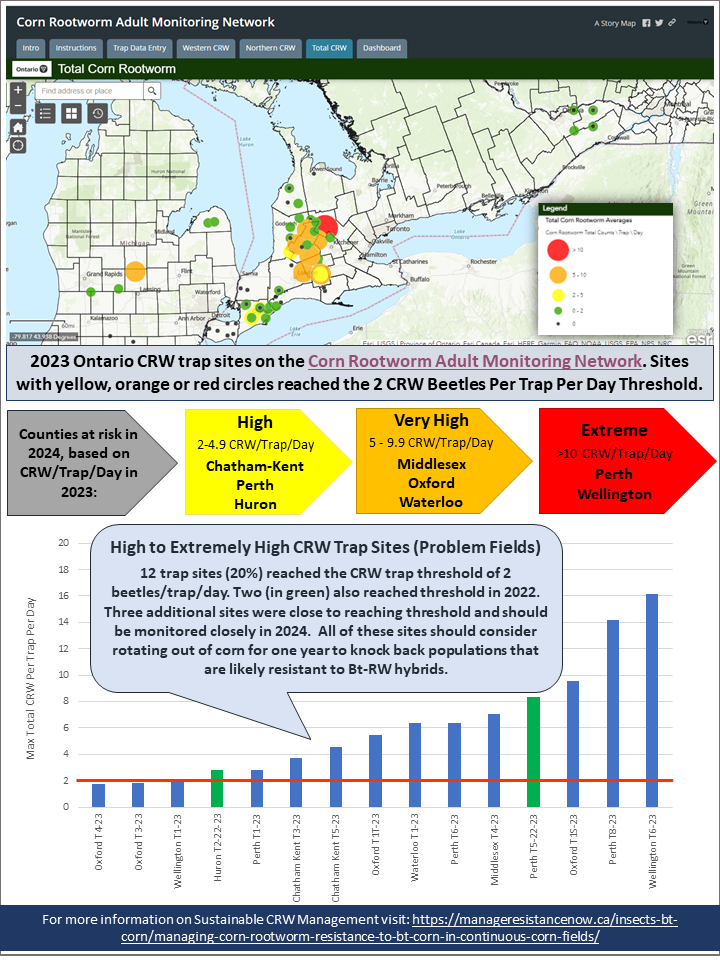Results from the 2023 Ontario corn rootworm (CRW) trap sites monitored through the Adult Corn Rootworm (CRW) Trap Monitoring Network have been summarized in the infographic below. Thank you to all the trap participants for monitoring their traps this year. These sites are helping us to identify fields and counties with potential resistant corn rootworm populations and understand the rootworm risk for 2024 in continuous corn fields. A big thanks to Dan Bihari, Senior GIS Specialist, OMAFRA for developing and maintaining the trap network site and to our sponsors including Grain Farmers of Ontario (GFO), Agricultural Biotechnology Stewardship Technical Committee (ABSTC) and OMAFRA for funding trap supplies.
There were 59 trap sites monitored in Ontario this year. CRW adult activity peaked in different weeks in August, depending on the region (see graph on first page of infographic). Even though corn rootworm populations were 60% lower than last year, 12 of the trap sites still reached or surpassed the CRW trap threshold of 2 beetles/trap/day (see graph on second page). These sites should be rotated out of corn in 2024 to knock back resistant populations and help to maintain what durability we have left in Bt-RW hybrids. Counties most at risk of experiencing corn rootworm issues next year including unexpected injury in Bt-RW hybrids include: Chatham-Kent, Perth and Huron (High – 2 – 4.9 beetles/trap/day); Middlesex, Oxford and Waterloo (Very High – 5 – 9.9 beetles/trap/day); and Perth and Wellington (Extreme – >10 beetles/trap/day).
Continuous corn production that has relied heavily on repeated use of Bt-RW hybrids are risking losing valuable management tools to resistance. Turning to hybrids containing RNAi traits in fields with Bt resistant populations will drive resistance to RNAi more quickly since is the only trait left to managing rootworm. It becomes essentially the only mode of action working. Rootworm has a history of adapting quickly when only one tool is repeated used against it. A more sustainable corn rootworm management practice is to rotate fields out of corn for one year after three years of continuous corn to knock back rootworm populations. This results in lower risk of rootworm the following one to two years, where other management tools can be used if needed. More information on sustainable rootworm management can be found at: https://manageresistancenow.ca/insects-bt-corn/managing-corn-rootworm-resistance-to-bt-corn-in-continuous-corn-fields/
A more details 2023 report for all trap sites across North America will be made available later this year at: https://cornrootworm.extension.iastate.edu/adult-trapping-network


A downloadable/printable version of this report is available here: https://fieldcropnews.com/wp-content/uploads/2023/11/2023-CRW-Trap-Network-InfoGraphic-Final-V2.pdf